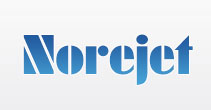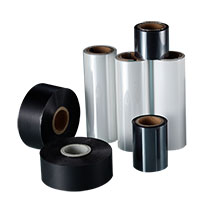
Contact Person: Miss Norejet
Mobile Phone:+8613690188010
WhatsApp:+8613690188010
E-mail: market@norejet.com
skype:christin-tz13
Add:Panyu Area Guangzhou China
Is coding ink safe on eggs?
When buying eggs in a supermarket or market, you may notice a string of numbers and letters printed on the eggshell. This information usually includes the production date, shelf life, manufacturer, etc. How are these codes printed? Is the coding ink safe? Will you ingest these inks when eating eggs? Today, let's uncover the truth about egg coding inks!
1. Why do eggs need coding?
The main purpose of egg coding is to improve food safety traceability and ensure that consumers can clearly understand the production source and freshness of eggs. These food-grade inks are usually strictly tested and certified to ensure that they meet food safety standards. These coding labels not only provide important product information, but also help consumers make wise choices when purchasing.
2. What are the ingredients of coding inks?
Egg coding uses food-grade ink. Unlike ordinary industrial ink, its ingredients are strictly screened, mainly including: food-grade solvents: such as ethanol and ethyl acetate, to ensure that the ink dries quickly and does not penetrate the inside of the eggshell; food-grade pigments: such as titanium dioxide, iron oxide, etc., to provide clear and stable colors; adhesives: to ensure that the ink adheres to the surface of the eggshell without easily falling off or spreading. These ingredients all meet food safety standards and will not affect the safety of eggs.
3. Is the coding ink safe? Will it be absorbed by the human body?
According to China's National Food Safety Standard (GB 9685-2016), food-grade coding ink must pass strict testing to ensure that it is harmless to the human body.
In addition, the eggshell of the egg is a porous structure, but it has a natural barrier function. The coding ink only stays on the surface of the eggshell and does not penetrate into the egg white or yolk. During the cooking process, high temperature can also further decompose the residue, making it safer to eat.
Although food-grade coding ink does not affect safety, there may be other contaminants on the surface of the eggshell, such as dust or bacteria. Therefore, it is recommended to wash the eggs before eating.
4. Advantages of food-grade ink of Norjet.
As a professional inkjet printer manufacturer, the food-grade ink used by Norjet has passed relevant food safety certification and is widely used in eggs, food packaging and other fields. We always adhere to product quality and food safety to ensure that consumers can eat and use with peace of mind.
Conclusion
Egg inkjet inkjet ink uses food-grade ingredients, meets national and international safety standards, and will not affect the safety of eggs. Of course, in order to maintain hygiene, it is recommended to clean the eggshell properly before cooking. At the same time, consumers should also maintain a vigilant and rational consumption attitude when purchasing eggs, choose regular channels and qualified products, and jointly maintain food safety and consumer rights.


